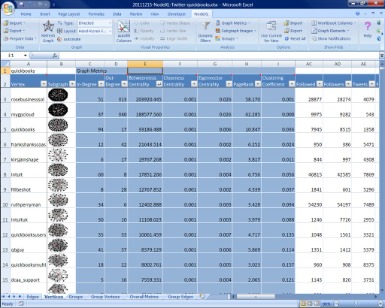
We need to perform this step to test the equality of https://personal-accounting.org/ and credits before generating the financial statements. But if you’re using an accounting software program, debits and credits should always be equal. In the financial accounting cycle outlined below, it is the seventh step before wrap-up procedures. You can create financial statements on a monthly, quarterly, or annual basis—as long as it is cost-effective to prepare them.
What is the formula for long term liability?
Long-term liabilities = liabilities – current liabilities
Long-term solvency of a company is determined by its ability to pay the long-term liabilities. Some examples of the long-time liabilities are: Bonds payable.
An approach to cost-based pricing in which price is computed using a percentage of a product’s total costs and expenses. A CHECK that has been written by the drawer and deducted on his or her records but has not reached the bank for payment and is not deducted from the bankBALANCEby the time the bank issues itsstatement. Difference between current assets and current liabilities; another name forWORKING CAPITAL.
Prime Rate
This financial statement can provide insight into the business’s sources and uses of cash. You can also assess the business’s ability to generate cash flow to fund daily operations and pay liabilities as they come due.
Generac Reports Fourth Quarter and Full-Year 2022 Results – InvestorsObserver
Generac Reports Fourth Quarter and Full-Year 2022 Results.
Posted: Wed, 15 Feb 2023 11:08:27 GMT [source]
Accountants calculate ROI by dividing the net profit of an investment by its cost, then multiplying by 100 to generate a percentage. For example, consider a person who invests $10,000 in a company’s stock, then sells that stock for $12,000. When an investor incurs a loss, the ROI is expressed as a negative number. A receipt is an official written record of a purchase or financial transaction.
Net Sales
Accounts payable would be a line item under current liabilities while a mortgage payable would be listed under long-term liabilities. Liabilities are a company’s financial obligations, like the money a business owes its suppliers, wages payable and loans owing, which can be found on a business’s balance sheet. Lizzette Matos is a certified public accountant in New York state. She earned a bachelor of science in finance and accounting from New York University. Matos began her career at Ernst & Young, where she audited a diverse set of companies, primarily in consumer products and media and entertainment. She has worked in private industry as an accountant for law firms and for ITOCHU Corporation, an international conglomerate that manages over 20 subsidiaries and affiliates. Matos stays up to date on changes in the accounting industry through educational courses.

It shows what belongs to the business owners and the book value of their investments . The providing of various accounting or data-processing services by an accountant, the output of which is in the form of financial statements ostensibly to be used solely for internal management purposes. Debits and credits underpin a bookkeeping system called double-entry accounting, in which every transaction equally affects two or more separate general-ledger accounts, such as assets and liabilities.
Trust Services
Simply put, a business should have enough assets to pay off its debt. If you borrow instead of paying outright, you have liabilities. Business loans or mortgages for buying business real estate are also liabilities. Our accounting basics dictionary includes dozens of important terms.
- This leftover money belongs to the shareholders, or the owners, of the company.
- Individual orfirmthat extends money to a borrower with the expectation of being repaid, usually withINTEREST.
- Introduction to accounting frequently identifies assets, liabilities, and capital as the field’s three fundamental concepts.
- An internalreorganizationof acorporationincluding a rearrangement of the capital structure by changing the kind of stock or the number ofshares outstandingor issuing stock instead of bonds.
- BONDwith a long-term, high-premium,COMMON STOCKconversionfeature and also offering a fairly competitive interest rate.
- The lawyer hires the CPA to do the investigation and determine the amount of money stolen or understated.
Inquire about his or her experience in your industry, rates, and services, and make sure you’re comfortable with how and how often you’ll communicate with your accountant before you sign anything. If the nature of your business is seasonal, you can tailor different factors like the frequency of your evaluation to this cycle. For instance, you might require more reviews of your accounting process during high season, and fewer during slower months.
Circumstance where loans in excess of ACCOUNTS RECEIVABLE are made againstinventoryin anticipation of future sales. Process designed to providereasonable assuranceregarding achievement of variousmanagementobjectives such as the reliability of financial reports.

One of the critical accounting calculations with the liability account is a company’s debt-capital ratio. These are short-term financial obligations owed by your company to vendors/service providers expected to be paid within an accounting year – usually 12 months. If you’re a small business owner, having a strong grasp of accounting fundamentals will help you keep your books balanced for your company’s long-term success. Although the accounting system you choose will be unique to your business and its industry, business owners are likely to encounter some common situations. Its reports are based on current and future information and are intended for internal users like managers and business owners. These reports aren’t meant to be distributed to external stakeholders and are solely for decision-making purposes and internal evaluation. Tax accounting is the process of compiling income and deductions for the purpose of filing a tax return.
The frequency in which you review and evaluate your Accounting 101 Basics Of Long Term Liabilitys is bound to be unique to your specific business. However, it’s normal to audit your process at the end of every month, quarter, and year.
Leverage – Looking at how a company is financed indicates how much leverage it has, which in turn indicates how much financial risk the company is taking. Comparing debt to equity and debt to total capital are common ways of assessing leverage on the balance sheet.

